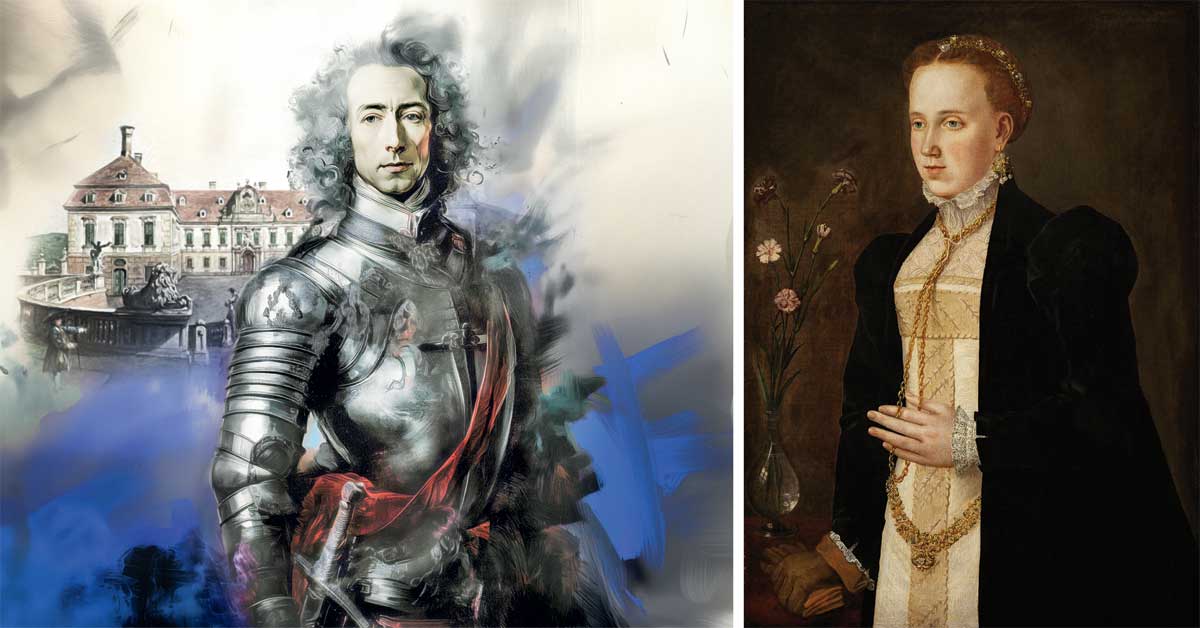

18 June 2025  Two exhibitions currently running in Austria invite visitors to explore beauty from different historical perspectives. One presents the refined taste and lavish lifestyle of Prince Eugen of Savoy, spread across the Baroque estates of Schloss Hof and Schloss Niederweiden near Vienna. The other, in the western region of Tyrol, showcases beauty as a cultural and bodily practice through the lens of Philippine Welser, an influential noblewoman of the 16th century. Together, these exhibitions provide authentic insights into historical ideals of aesthetics, design, and self-presentation—tracing beauty not as fashion, but as legacy. A Prince's Taste: Style and Splendor at Schloss Hof and NiederweidenAbout 45 minutes by car from Vienna (approximately 45 km), Schloss Hof and its nearby counterpart Schloss Niederweiden host the double exhibition "Eugene of Savoy: The Man Behind the Prince" (on view until 2 November 2025). It marks the 300th anniversary of Schloss Hof and brings forward personal and lesser-known aspects of one of Europe's most powerful figures of the Baroque era.The main exhibition at Schloss Hof delves into Prince Eugen's role as a strategist, intellectual, and passionate art collector. It reflects how his networks and curiosity shaped not only Austrian politics but also cultural history. His estates—still remarkably preserved—speak volumes about his interest in architecture, books, gardens, and decorative arts. At the more intimate setting of Schloss Niederweiden, the focus shifts toward lifestyle. Here, visitors encounter examples of baroque interior textiles, curated wardrobe pieces, and decorative elements that defined Eugen's refined style. The exhibit is small but rich in atmosphere, giving a vivid impression of how the prince designed his world—not with a single obsession, but through an eclectic, cultivated sense of beauty. The palaces and extensive gardens surrounding them remain living evidence of that baroque vision. A Lady's Rituals: Philippine Welser and the Craft of BeautyIn contrast to Prince Eugen's 18th-century world, the exhibition "The Art of Beauty" at Schloss Ambras Innsbruck (running from 18 June to 5 October 2025) takes visitors a step further back—to the 16th century—and introduces Philippine Welser (1527–1580), a noblewoman known not only for her secret marriage to Archduke Ferdinand II but also for her knowledge of medicine, domestic management, and beauty practices.Welser's preserved Renaissance bath and her handwritten book of remedies are among the key features of the show. With objects and recipes reaching back to antiquity, the exhibition surveys five millennia of beauty culture—its rituals, tools, and shifting ideals. Far from being a purely feminine concern, the show makes clear that men too engaged actively in beautification, adapting to changing trends and social expectations. In addition to historical reconstructions, the show incorporates contemporary reflections, including commentary on body image and media culture. At its heart, though, is the enduring question: What is beauty, and how do we craft it? On Beauty, Art and the Timeless Practice of CreationAcross both exhibitions, beauty is never just surface. It is shown as a matter of practice, invention, and cultural expression—something made with hands, minds, and materials. From Philippine Welser's herbal formulas to the exquisite fabrics of Schloss Hof, what unites these displays is a shared appreciation of art in the older sense of the word: derived from the Latin ars, meaning skill or craft.This deeper notion of beauty—created through knowledge, discipline, and vision—is what lingers. Whether in the weaving of tapestries, the planning of tiered gardens, or the mixing of salves, beauty here is not trend-driven. It is something constructed and preserved. In a time when image is fleeting and style is often virtual, these exhibitions remind us that true beauty is a form of making. And that never goes out of fashion. Images from left to right: An AI-generated portrait of Prince Eugene of Savoy by Robert Josipović, based on original images and a watercolor by Heinz Kraner. © Schloß Schönbrunn Kultur- und Betriebsges.m.b.H. On the right: A historical portrait of Philippine Welser. © KHM-Museumsverband |